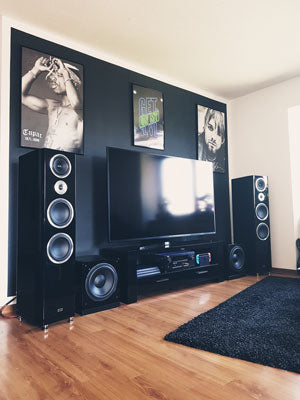

The latter works great for music, movies, video games, and podcasts. Our favorite tiny computer speakers have been upgraded with louder sound, more input options, and a new mode that doubles the audio intensity. Crackling at max volume -Won’t replace your home theater system It’s also one of the better-looking models out there with a retro-inspired design that’s donned in a wooden veneer and mesh magnetic grille.


Connectivity is spot-on too, so you won’t ever have to worry about dropout when streaming music. Bass is tight and the midrange is emphasized for vocals to shine. These Bluetooth bookshelf speakers match the precise sound found on most wired computer speakers. The Audioengine HD3 currently sits at No.1 on our best computer speakers list. Need something for private listening? Then make sure to also look at our roundup of the best noise-cancelling headphones, which includes everything from over-ear luxury cans to truly wireless buds. Here are the best Apple MacBook laptopsĬheck out our top picks for the best computer speakers, based on hours of testing and research.Best laptops in 2021 for every need and budget.You’ll even find gems here from consumer electronics staples like Bose, Harman Kardon, and gaming accessory giant, Razer. Key players worth mentioning that have cemented their legacy as top computer speaker manufacturers include Edifier, Creative, and Audioengine just to name a few. desktop, laptop, smartphone) you have in mind. The VHF radio is absorbed more quickly, and can't bend round the curvature of the earth.The market plays host to numerous models of different styles, which work great for any setup or computing device (e.g.

Incidently these two reasons are why you can pick up long wave radio 4 in France, but local radio transmitted on Very High Frequency (VHF) and therefore shorter wavelength runs out after 20-30 miles from a transmitter. A long wavelength will tend to bleed round the edge of shadows better than a short wavelength: The diffraction is in green vs So if the sound is going round several corners the long wavelengths will travel further. There is a second effect called diffraction. You can have a: Long wavelength with a low frequency and pitch the red arrows indicate the velocity of the particles Shorter wavelength with a higher frequency and therefore pitch for the same size/amplitude/volume the difference in speed between two neighbouring particles will be much for for the short wavelength so it will have more frictional losses and therefore be absorbed quicker by walls etc. If you consider how fast two neighbouring parts of a wave are moving in a wave (I have drawn a wave on a string because it is easier to think about, and draw, but the same holds for sound waves). The way that sound waves lose energy is essentially by bits of air next to each other rubbing on one another causing frictional losses.


 0 kommentar(er)
0 kommentar(er)
